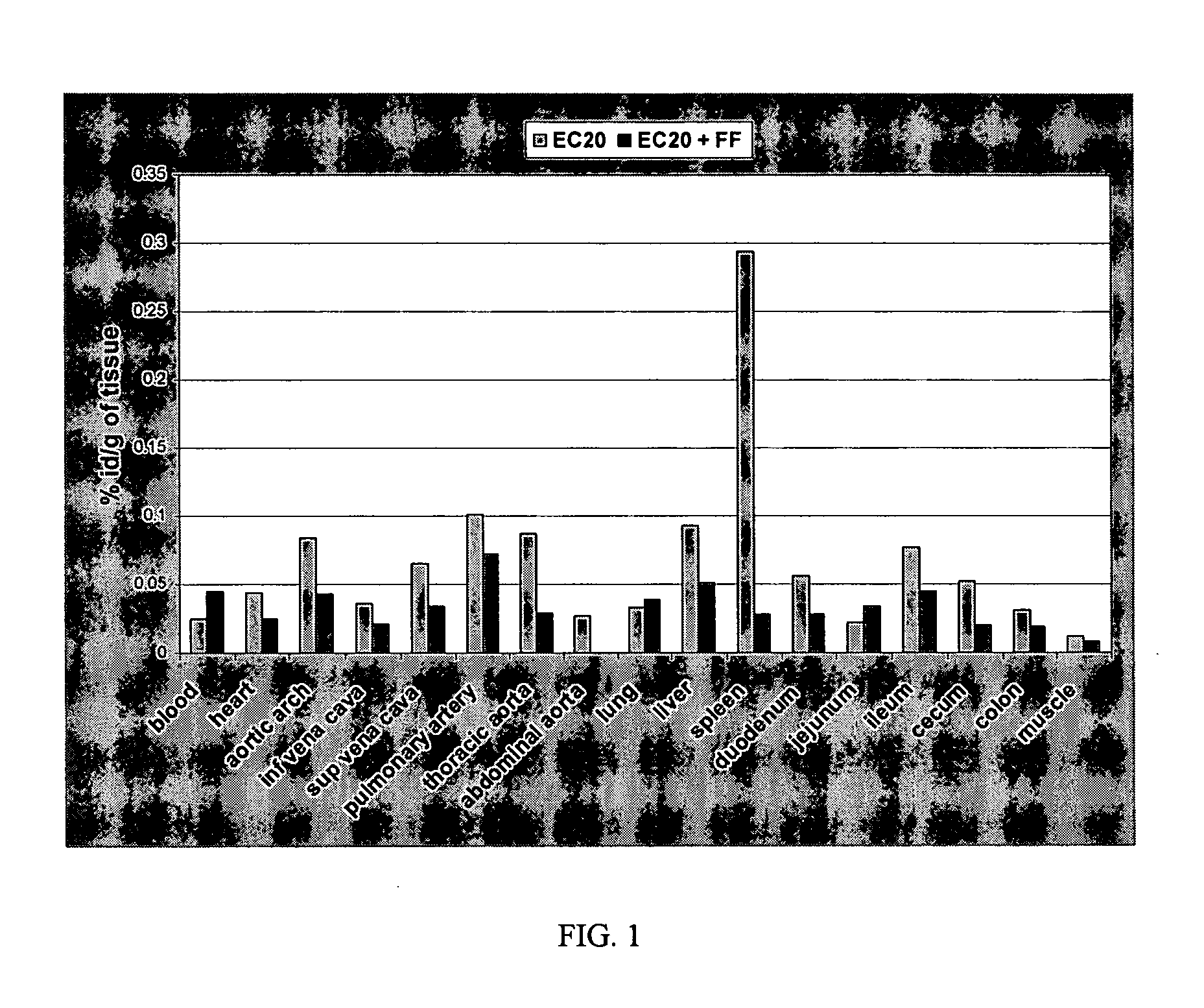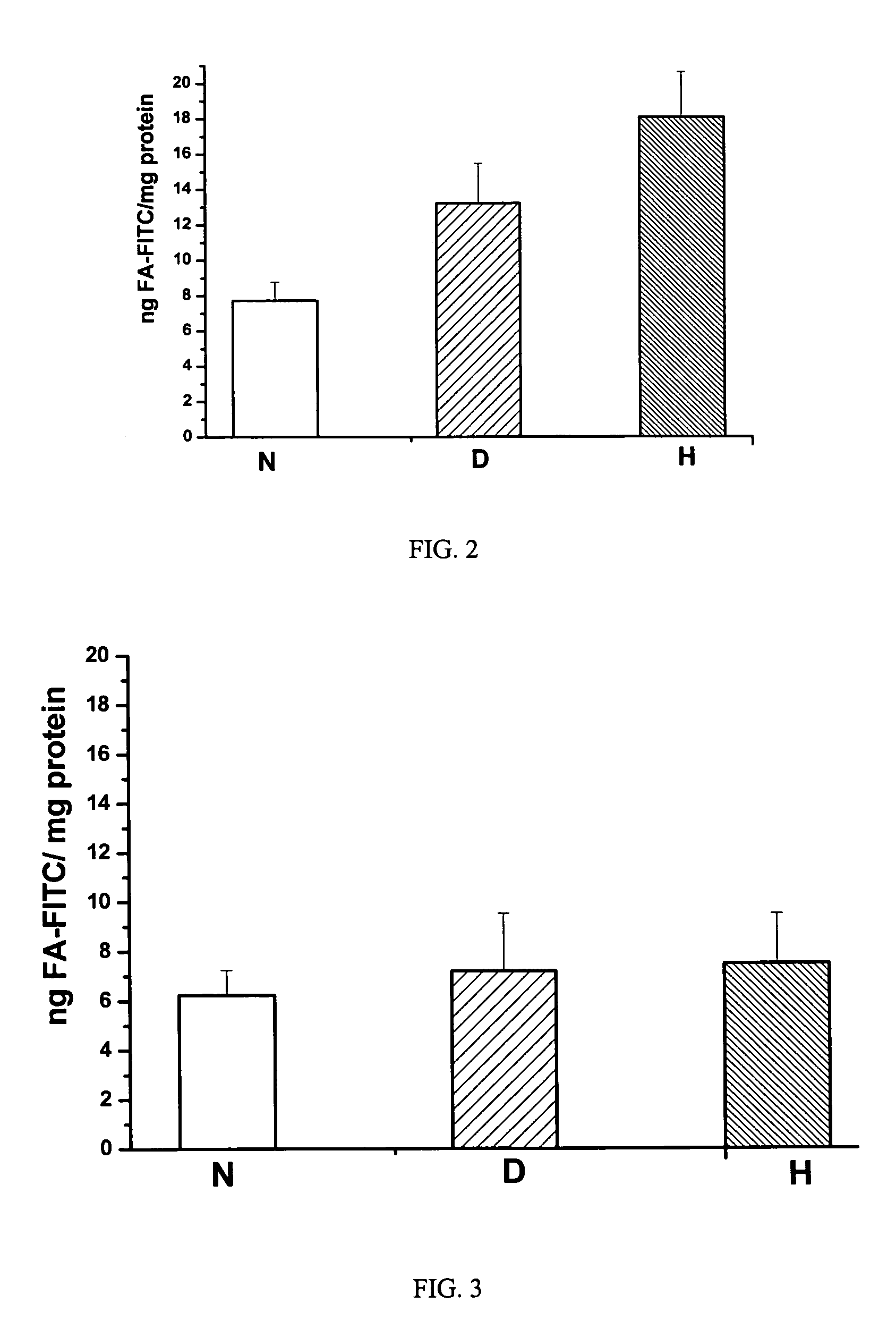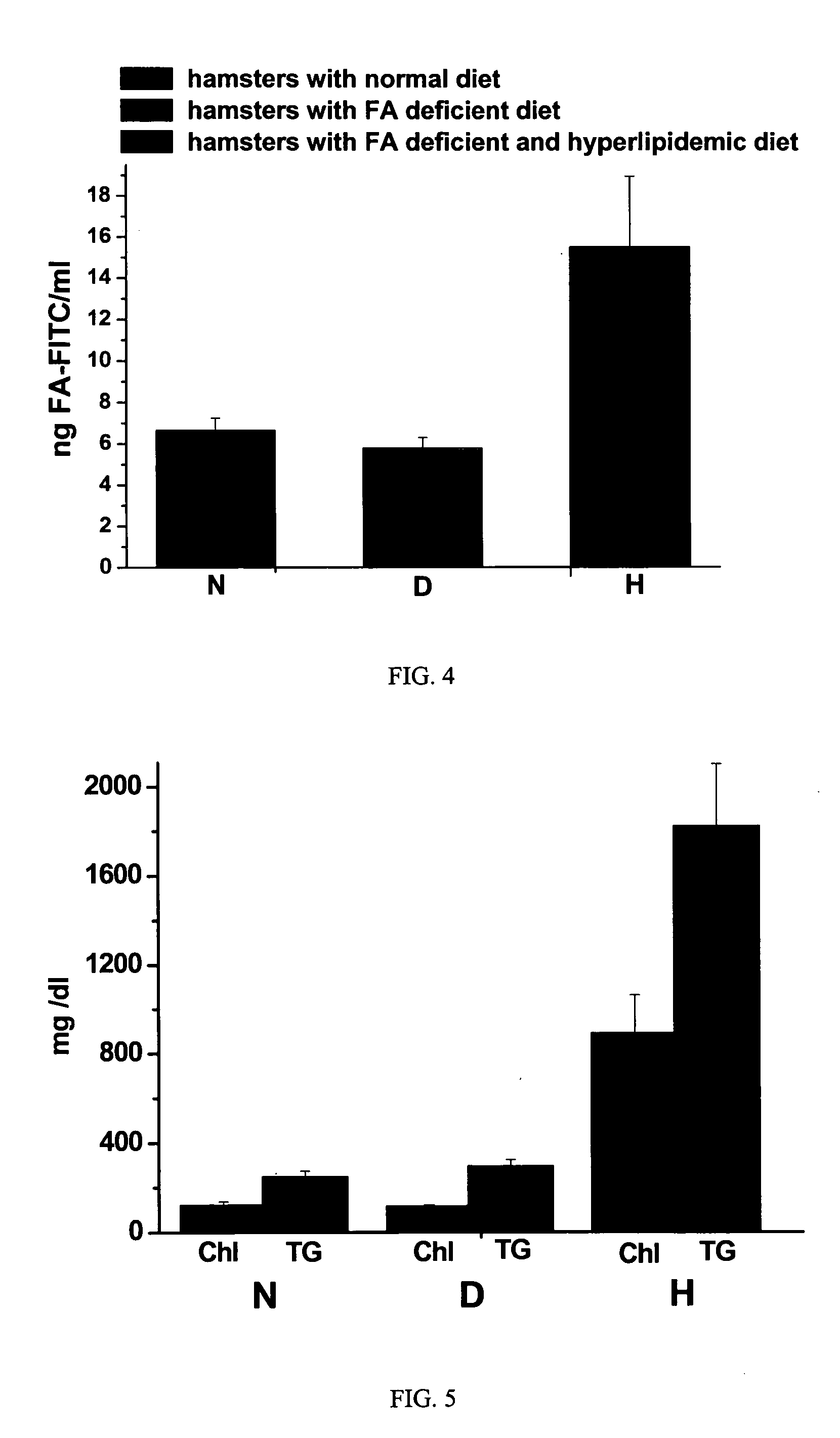Diagnostic method for atherosclerosis
a technology for atherosclerosis and diagnostic methods, which is applied in the field of diagnostic methods for atherosclerosis, can solve the problems of oxidative modification of lipoprotein particles, and methods are not presently available to distinguish active and inactive atherosclerosis plaques
- Summary
- Abstract
- Description
- Claims
- Application Information
AI Technical Summary
Benefits of technology
Problems solved by technology
Method used
Image
Examples
example 1
Analysis of EC20 Uptake in the Organs of Atherosclerotic Rabbits
[0052] The Watanabe Heritable Hyperlipidemic rabbit model (i.e., a model for atherosclerosis) was used to determine whether binding of a folate-targeted 99mTc chelating chemical moiety (EC20; see U.S. Patent Application No. 60 / 378,571, incorporated herein by reference) could be detected in the arteries of atherosclerotic rabbits. Watanabe rabbits are LDL receptor deficient and, thus, provide a model for hypercholesterolaemia and atherosclerosis.
[0053] Watanabe rabbits (2 rabbits each 6 months old) were purchased from HRP-Covance (PA, USA). The rabbits were kept on a folate deficient diet for 3 weeks at which time the biodistribution of EC20 was evaluated. For the EC20 biodistribution studies, each rabbit was administered with 3.4 mCi of 99mTc and 7.4×10−9 moles of EC20 (EC20 in FIG. 1). One rabbit (i.e., control) also received 1000-fold excess of free folic acid (EC20+FF in FIG. 1). The total injection volume for eac...
example 2
Materials
[0055] Fmoc protected amino acid derivatives, Fmoc-glycine loaded Wang resin, 2-(1H-benzotriazol-1-yl)-1,1,3,3-tetramethyluronium hexafluorophosphate (HBTU) and N-hydroxybenzotriazole were purchased from Novabiochem (San Diego, Calif.). N10-trifluoroacetylpteroic acid was synthesized from folic acid (Sigma Chemical Company, St. Louis, Mo.) according to a previously published report (Godwin, 1972). The synthesis of gamma-carboxy linked folate-fluorescein (folate-FITC) has been described in a previous publication (Kennedy et al., 2003). RPMI Medium 1640 with L-glutamine, but without folic acid was from Gibco-BRL (Grand Island, N.Y., U.S.A.); folic acid and triglyceride reagent GPO-PAP were from DIALAB (Vienna, Austria); OCT compound embedding medium for frozen sections were from Division Miles Laboratories Inc. (Illinois, USA); Hoechst 33342 and Texas Red N-hydroxysuccinimide from Molecular Probes, Inc. (Eugene, Oreg., USA); INFINITY CHOLESTEROL reagent and other chemicals ...
example 3
Synthesis of Folate-Texas Red Conjugate
[0056] Standard Fmoc peptide chemistry was used to synthesize a folate-derivatized peptide linked to Texas Red via the gamma carboxyl of folic acid. The sequence Gly-Lys-(γ)Glu-pteroic acid was constructed by Fmoc chemistry using HBTU and N-hydroxybenzotriazole as the activating agents along with diisopropyethylamine as the base and 20% piperidine in DMF for deprotection of the Fmoc groups. Fmoc-protected lysine containing a 4-methyltrityl protecting group on the ε-amine was linked to Fmoc-protected glycine attached to a Wang resin. An α-t-Boc protected N-α-Fmoc glutamic acid was then linked to the peptide to provide a γ-linked conjugate on folate after attaching N10-trifluoroacetylpteroic acid to the peptide. The methoxytrityl protecting group on the ε-amine of lysine was removed with 1% trifluoroacetic acid in dichloromethane to allow attachment of Texas Red. Texas Red N-hydroxysuccinimide (Molecular Probes, Eugene, Oreg.) in DMF was reacte...
PUM
| Property | Measurement | Unit |
|---|---|---|
| volume | aaaaa | aaaaa |
| pH | aaaaa | aaaaa |
| adhesion | aaaaa | aaaaa |
Abstract
Description
Claims
Application Information
 Login to View More
Login to View More - R&D
- Intellectual Property
- Life Sciences
- Materials
- Tech Scout
- Unparalleled Data Quality
- Higher Quality Content
- 60% Fewer Hallucinations
Browse by: Latest US Patents, China's latest patents, Technical Efficacy Thesaurus, Application Domain, Technology Topic, Popular Technical Reports.
© 2025 PatSnap. All rights reserved.Legal|Privacy policy|Modern Slavery Act Transparency Statement|Sitemap|About US| Contact US: help@patsnap.com



